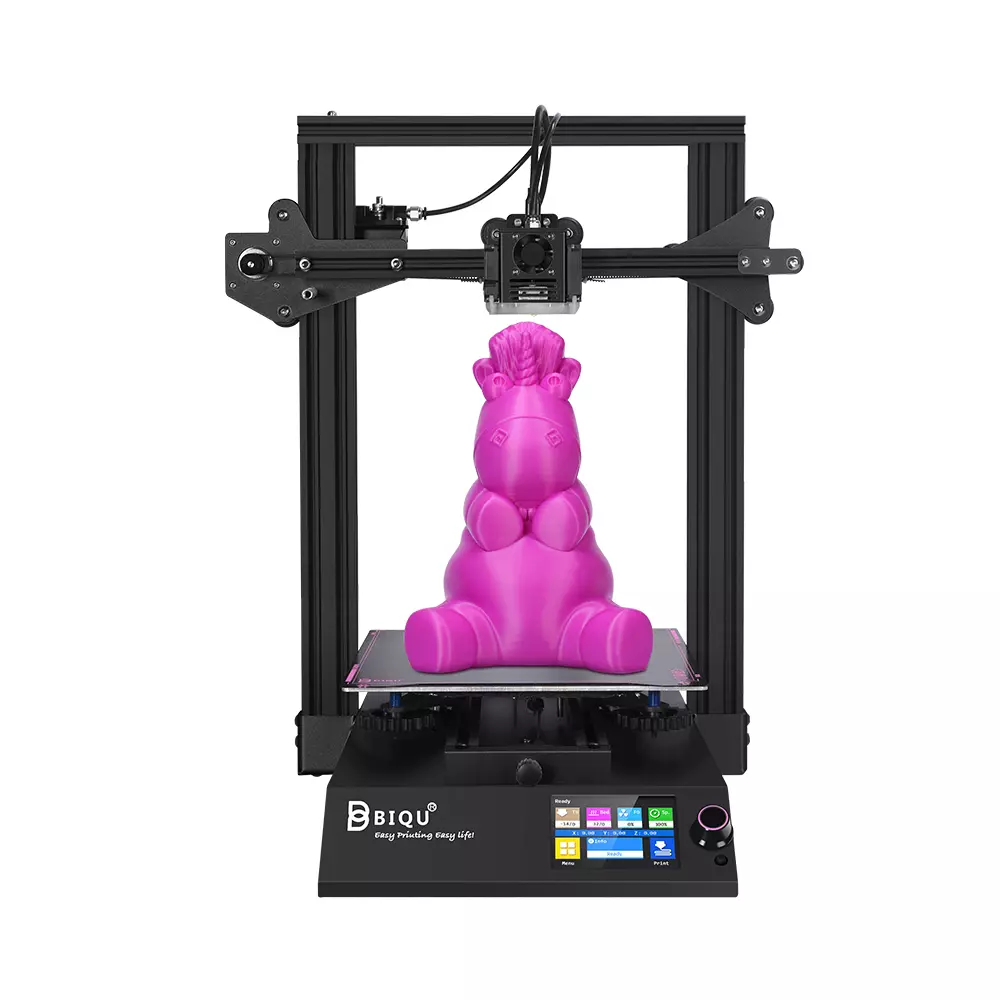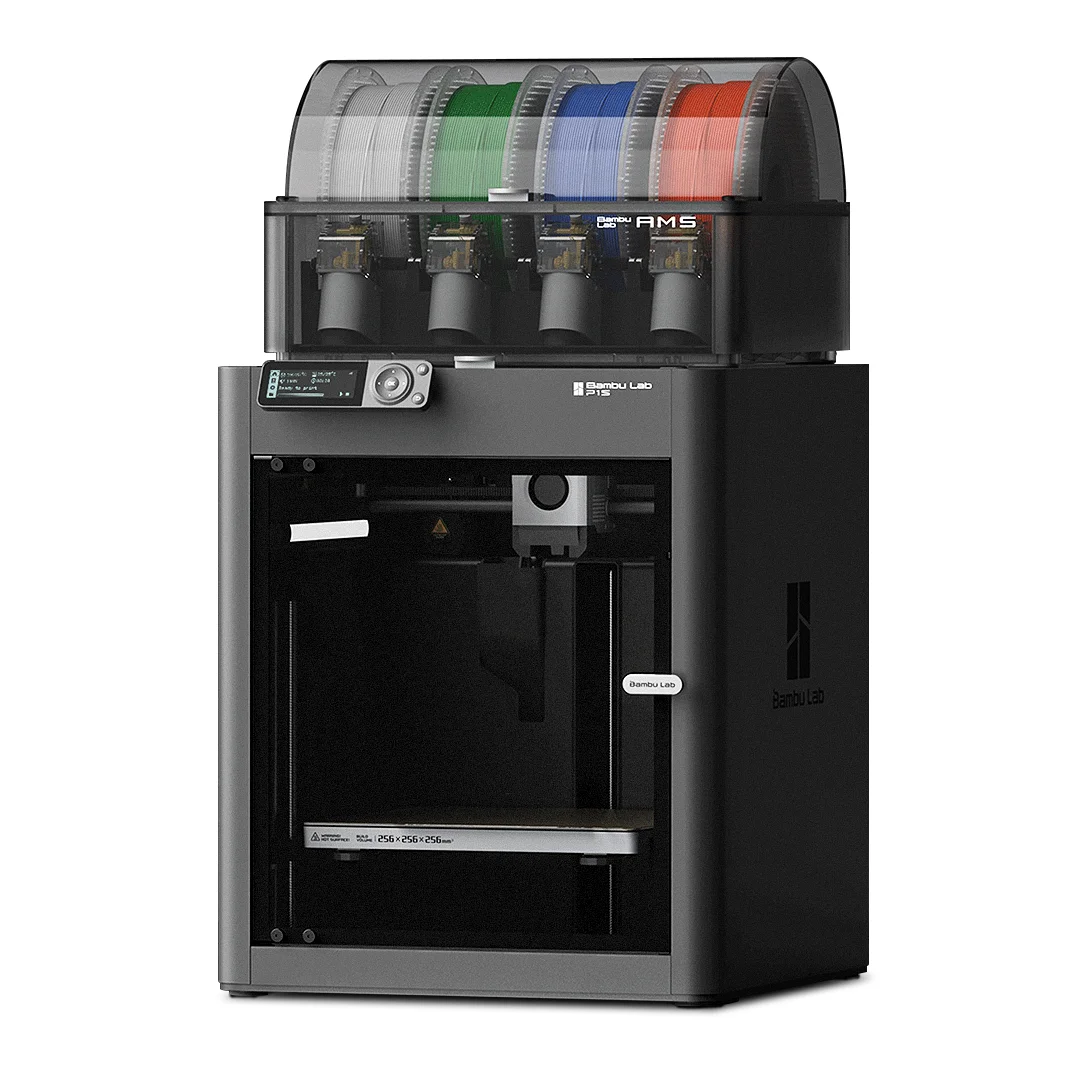Compare BIQU B1 vs P1S
Comparison between the best 3D printers
Choose the best 3D printer at the best price. The cheapest 3D printers are here.
Buy a 3D printer here with 3D Fila.
 |
 |
|
| Model | BIQU B1 |
P1S[BUY P1S] |
| Printing Material | Filament | Filament |
| Buy Filament for BigTreeTech BIQU B1 | Buy Filament forBambu Lab P1S | |
| Estimated price | $269,00 | $949,00 |
| Manufacturer | BigTreeTech | Bambu Lab |
| Release Year | 2020 | 2023 |
| Print Volume [mm] | 235x235x270 | 256x256x256 |
| Printer Size [mm] | 412x402x492 | 389x389x458 |
| Weight [kg] | 8,00 | 12,95 |
| Power Loss Recovery | YES | YES |
| Enclosed printer | NO | YES |
| Bed Leveling | Manual | Automatic |
| Filament End Sensor | YES | YES |
| Bed type | Heated | Heated |
| Power supply system | Bowden | Direct Drive |
| Standard nozzle | 0,4 | 0,4 |
| Maximum Nozzle Temperature [°C] | 250 | 300 |
| Maximum Bed Temperature [°C] | 100 | 100 |
| Maximum printing speed [mm/s] | 100 | 500 |
| Filament holder | YES | YES |
| Camera for supervision | NO | NO |
| Recommended filaments | PLA, TPU, ABS, PETG | PLA, PETG, TPU, PVA, PA, PA-CF, Nylon, PC |
| Recommended slicers | Cura, Simplify, Slic3r | Bambu Studio, Super Slicer, Cura, Prusa Slicer, Orca |
| Maximum Resolution [mm] | 0,1 | 0,1 |
| Processor | 32 Bits BTT SKR V 1.4 | Quad ARM A7 1.2 GHz |
| Display | Touchscreen TFT 3,5'' | Touchscreen 5'' |
| Power Supply | 24V / 360W | 350 W |
| Connectivity | SD / USB | Wifi, Bambu bus, Cartão SD |
| Operating systems | Windows, Mac, Linux | Windows, Linux, Macbook |
| Date of registration in the system | 2021-04-14 | 2024-04-11 |
| Release date | 2020 | 2023 |
| Extra features | The BIQU B1 is an advanced 3D printer with a silent 32-bit BTT SKR V1.4 motherboard and ARM Cortex-M3 CPU, offering DIY interfaces (I2C, SPI, WiFi) and dual Z-axis. Its dual BTT B1 TFT35 V3.0 operating system allows real-time monitoring and multiple printing modes, including G-code visualization effects. It stands out for its BIQU SSS (Super Spring Steel), ensuring easy model adhesion and simplified removal, with the possibility of using it on both sides. It includes a filament sensor, automatically pausing printing in case of filament breakage. The multicolored RGB lights integrated into the hotend allow you to view the printing status even at night. Additional notes include the need for a BIQU-specific Type-C cable and extra interfaces for smart filament sensor and BL Touch. | The Bambu Lab P1S stands out for its out-of-the-box practicality, eliminating the need for manual adjustments with automatic calibrations such as bed leveling and vibration compensation. It features multicolor printing capability through the AMS system, allowing up to 16 colors when connecting four AMS units. With an advanced control algorithm, the P1S offers fast printing speeds without sacrificing quality. Equipped with modern features such as filament end sensor, semi-automatic belt tension, direct extruder, welded frame and all-metal hotend, along with a fully enclosed chamber, the P1S promotes a superior printing experience, supporting a wide range of materials. |
| Support for multiple colors and materials (AMS and CFS) | NO | YES |
Notes * |
||
| Cost-benefit | 7 / 10 | 7 / 10 |
| Hardware | 2 / 10 | 5.6 / 10 |
| Tela | . | . |
| Print volume | 3 / 10 | 4 / 10 |
| Performance | 1 / 10 | 4 / 10 |
| [BUY P1S] |
Conclusion |
| In comparing the BIQU B1 and the Bambu Lab P1S, it's clear that both printers cater to different user needs, with significant variations in features, capabilities, and pricing. The BIQU B1, positioned as a budget-friendly option, excels in simplicity, offering a manual bed leveling system and a decent print volume. While it provides essential features like power loss recovery and filament end sensors, its performance is relatively limited, with a maximum printing speed and fewer supported materials. This makes it an ideal choice for beginners or hobbyists focused on basic projects without requiring advanced functionalities. On the other hand, the Bambu Lab P1S represents a more premium investment, showcasing cutting-edge technology and features that significantly enhance user experience. The fully enclosed design, automatic bed leveling, and fast printing speeds cater to users looking for convenience and efficiency, especially in more complex printing tasks. Additionally, the P1S supports a wider variety of materials, making it a versatile choice for advanced users and professionals. In conclusion, if budget constraints are a primary concern, the BIQU B1 offers reasonable functionality for its price, suitable for casual users. Conversely, the Bambu Lab P1S, despite its higher price point, delivers superior performance and features, making it a worthwhile investment for those seeking advanced 3D printing capabilities. Ultimately, the best choice depends on individual priorities—whether one values affordability or is willing to invest in a more feature-rich and efficient printing solution. |

